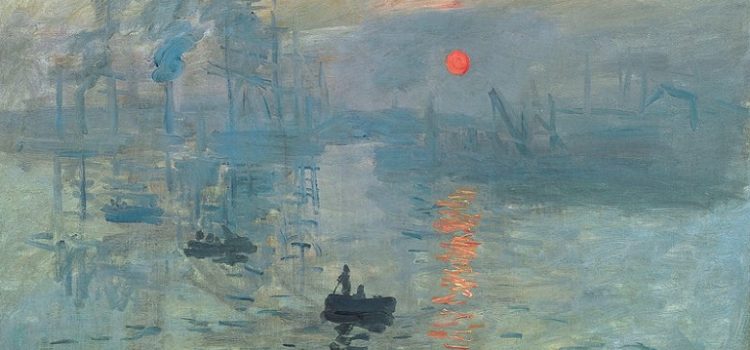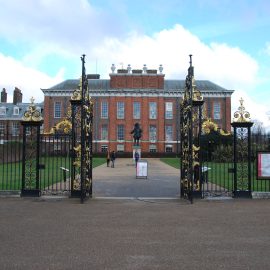

This article is an excerpt from the Shortform summary of "David and Goliath" by Malcolm Gladwell. Shortform has the world's best summaries of books you should be reading.
Like this article? Sign up for a free trial here .
How did the first Impressionist exhibition come about? And what made it so extraordinary?
The first Impressionist exhibition, April 15th – May 15th, 1874, was a Paris exhibition of the works of Monet, Renoir, and Degas, among others. Despite being rejected by the prestigious Salon, the Impressionists made history with their exhibition.
We’ll cover how the first Impressionist exhibition came to be, why it was a turning point in the history of art, and how the Impressionists benefitted from being Big Fish in a Little Pond.
The Impressionists: Big Fish in a Little Pond
The Impressionists offer an example of a group that chose to be Big Fish in a Little Pond, a choice that ultimately secured their place in the history of art. We’ll see that, had they continued to try to be Little Fish in the Big Pond of Paris, there wouldn’t have been a first Impressionist exhibition and we probably wouldn’t know about them today.
The Salon
150 years ago, the Impressionists had to choose between exhibiting their work at the Salon in Paris, the most prestigious art exhibition in Europe, and putting on their own show, the first Impressionist exhibition. At the time, if you were not exhibited at the Salon, you and your work didn’t matter. It was much more conventional and potentially lucrative to try to get accepted by the Salon, rather than exhibit on your own.
The Salon favored graceful, traditional works depicting historical events or stories from classical myths. The Impressionists—including Monet, Renoir, Degas, and Cézanne—used visible, audacious brush strokes to paint scenes from everyday life.
To the establishment, their work appeared unfinished and sloppy. The Salon rarely accepted work by the Impressionists, and when they did, the art was hung high up or in the back of the building, where it wasn’t seen.
The Choices of the Impressionists
In this situation, the Impressionists had two very different choices.
Choice #1: They could continue to attempt to gain viewers and buyers the traditional way, through the Salon. In doing so, they would be Little Fish in a Big Pond (the Salon was 300 yards long and two stories high, hung with three to four thousand paintings).
- Pros:
- They would have a chance at being recognized and validated by Paris’s esteemed art critics.
- Their work would likely increase in value if it won awards at the Salon.
- Choosing the Salon didn’t require the courage of breaking out on their own
- Cons:
- The crowds at the Salon were big. It was hard to actually see the art.
- Placed high among thousands of other paintings, their art wouldn’t get much attention (if it was seen at all).
Choice #2: They could exhibit at their own show. Here, they would be Big Fish in a Little Pond (the intimate show would display 165 works rather than thousands). This was the first Impressionist exhibition.
- Pros:
- They could paint what they liked and valued, rather than what the establishment expected to see.
- They could show as many canvases as they liked (the Salon set the limit at 3; in the inaugural Impressionist show, Degas exhibited 10).
- Their works wouldn’t get lost in a sea of others; People would actually see them.
- Cons:
- The Paris art establishment would mock or ignore them.
- Their art may not be worth as much as if it had succeeded at the Salon.
- They might be overlooked because they weren’t exhibiting at the Salon.
First Impressionist Exhibition
After many years of failing to get noticed at the Salon, the Impressionists struck out on their own, creating their first Impressionist exhibition. Although their exhibitions were controversial at the time, they drew huge crowds and their art was seen. If they hadn’t held the first Impressionist exhibition, we may not know the Impressionists today.
The Impressionists’ situation provides a good example of the benefits of being a Big Fish in a Little Pond. The Impressionists tried many times (largely unsuccessfully) to be Little Fish in the Big Pond of the salon. When they changed course and decided to be Big Fish in a Little Pond, they didn’t do it because they felt inadequate next to their peers, as the theory of relative deprivation would suggest. They left because the conventional way wasn’t working for them. After years of rejection, they were running out of options. This problem spawned the first Impressionist exhibition.
———End of Preview———

Like what you just read? Read the rest of the world's best summary of "David and Goliath" at Shortform . Learn the book's critical concepts in 20 minutes or less .
Here's what you'll find in our full David and Goliath summary :
- Why being the underdog can actually be an advantage
- Why you shouldn't be afraid of powerful giants
- Strategies to get an edge when you're overpowered






